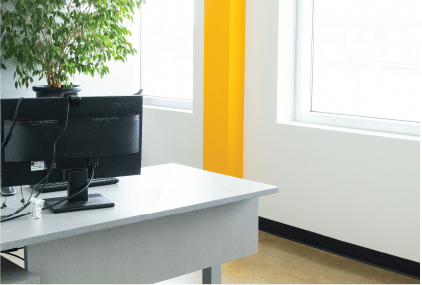Sit-stand desks have become increasingly popular in modern workplaces, promoting a healthier work environment. These innovative desks allow users to alternate between sitting and standing, significantly enhancing productivity and overall well-being.
Improved Posture and Reduction of Back Pain
Sit-stand desks promote better posture and reduce the likelihood of back pain.
By allowing individuals to adjust their working height, sit-stand desks encourage natural spinal alignment. This flexibility can decrease the strain associated with prolonged sitting, subsequently reducing chronic discomfort in the lower back. Studies have indicated that employees using these desks experience fewer musculoskeletal issues. Better posture not only mitigates pain but also enhances focus and efficiency. Therefore, investing in sit-stand desks can lead to substantial health dividends.
Increased Energy and Productivity
Switching between sitting and standing boosts energy levels and productivity.
Many users of sit-stand desks report higher energy levels throughout their workday. The act of standing increases blood flow and circulation, which can lead to improved alertness and cognitive function. As a result, employees are more motivated and engaged with their tasks. This increase in stamina not only helps in completing daily workloads but also encourages creativity and collaboration among team members. Overall, this dynamic helps contribute to a more vibrant workplace atmosphere.
Enhanced Mood and Reduced Fatigue
Sit-stand desks can significantly enhance mood and lower fatigue.
Surveys have shown that individuals who utilize sit-stand desks report feeling happier and less fatigued. By promoting physical movement, these desks can help ward off feelings of lethargy that often accompany long periods of sitting. Regularly changing positions can stimulate the release of endorphins, leading to a more positive outlook on work tasks. Consequently, a better mood translates to improved interactions with colleagues and enhances a team-oriented atmosphere.
Lower Risk of Serious Health Issues
Sit-stand desks help lower the risk of serious health complications.
Extended periods of sedentary behaviour have been linked to various health concerns, including heart disease, obesity, and diabetes. By incorporating sit-stand desks into daily routines, workers can mitigate these risks through increased physical activity. Alternating positions encourages more movement, which helps manage weight and potentially lowers blood sugar levels. Therefore, these desks act as a preventative measure for long-term health issues.
Customization for Individual Needs
Sit-stand desks allow for greater customization to fit individual needs.
One of the most appealing aspects of sit-stand desks is their adjustability to suit anyone’s specific requirements. Users can easily set the height of their desk to accommodate their body size and preferred posture. This customization not only improves comfort but also fosters a more efficient work experience, as individuals can optimize their setups based on their tasks. Such versatility is increasingly recognised as crucial for supporting diverse workplaces.
Support for Remote and Hybrid Work
Sit-stand desks are ideal for supporting remote and hybrid work environments.
As remote and hybrid work models become more prevalent, having ergonomic furniture like sit-stand desks is more important than ever. These desks can easily fit into home offices, providing the flexibility needed for changing work styles. Employees working from home often lack ergonomic support, which can lead to discomfort. A sit-stand desk can help bridge that gap, ensuring individuals remain productive and healthy in non-traditional workspaces.
Potential Long-Term Financial Benefits
Investing in sit-stand desks can yield long-term financial benefits for employers.
While the initial cost of sit-stand desks may be higher, the long-term savings associated with improved employee health and productivity can offset this expenditure. Healthier employees typically result in lower healthcare costs, reduced absenteeism, and increased job satisfaction. Consequently, businesses can experience better retention rates and a high-performing workforce. Over time, these factors contribute to overall company profitability and a more positive work culture.
The adoption of sit-stand desks offers numerous benefits that extend beyond mere comfort. By promoting better posture, enhancing mood, and reducing health risks, these desks present a comprehensive solution for modern work environments, leading to happier, healthier, and more productive employees.

